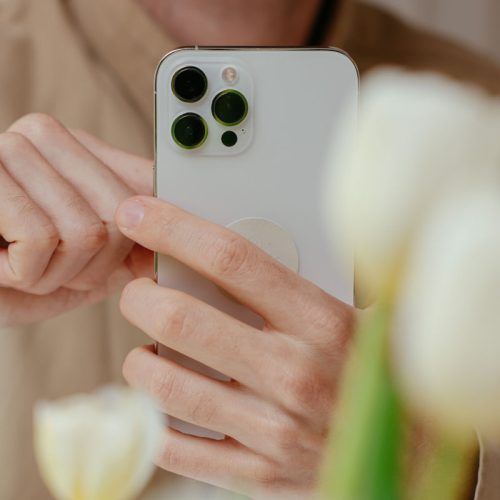Apple has a penchant for taking bold steps with its products, especially when it concerns the iPhone. The removal of the headphone jack and the in-box charging adapter have been two changes that drew criticism but were later adopted as an industry-wide practice with a positive impact. While people got comfortable with these changes, some of Apple’s previous moves have been questionable at best. While the infamous ‘Bendgate’ scandal that plagued users of the iPhone 6 and iPhone 6 Plus got all the negative attention it warranted, it was the Apple Batterygate scandal that shook all iPhone users around the world to the core.
Unlike the Bendgate scandal where the harm to the iPhone was still avoidable in some ways, the Apple Batterygate scandal affected every iPhone user. The worst part was that Apple did not tell its customers about the secret performance alterations that could lead to a shorter product lifecycle. When the findings broke out on the news, several iPhone users took Apple to court and sued it for ruining the user experience without any prior notification.
After years of arguments in courts, the Apple Batterygate scandal has now reached its settlement stage, with all the claimants set to be compensated handsomely. If you’re interested in finding out more about this development, here’s a roundup of everything there is to know about the Apple Batterygate scandal.
What is the Apple Batterygate scandal all about?
The Apple Batterygate scandal is one of those instances where Apple decided how a device should function once its battery is past its prime. Batteries degrade over time and the more you charge a battery, the more its chemistry deteriorates. Hence, with the earlier generations of iPhones, it was quite common to see older models quickly discharging and suddenly shutting down without any warning.

To counter this, Apple modified its iOS operating system and released it for the iPhone 6, iPhone 6S, iPhone SE 1st Gen and iPhone 7 series. The software limited the performance potential when the battery started deteriorating, which Apple claimed was to increase its overall stamina and enhance the user experience. The performance throttling was removed when a user replaced the battery on their old iPhone, thereby restoring the original performance.
However, Apple didn’t notify its users or developers about this feature and hence, once the battery deteriorated, many users were unknowingly left frustrated with the slow performance of their iPhone. This also forced many of them to upgrade to a newer model. Once this feature was discovered, it led to a huge uproar among iPhone users across the world, with several of them filing lawsuits against Apple.

iPhone 15’s Launch Date Leaked? Here’s When You Can Probably Buy Apple’s Upcoming Flagship

The iPhone Clone Wars: Android Copycats That Are Worth Looking At
The Apple Settlement
After years of battling it out in court, the decision was given in favour of the consumers affected by the Batterygate issue. Mark C. Molumphy, a partner at Cotchett, Pitre & McCarthy, the firm handling the lawsuit on behalf of Apple’s customers, clarified that Apple is directed to pay a total sum between USD 300 million to USD 500 million to the three million iPhone users who had filed the claim prior to the 2020 deadline. Most claimants are entitled to receive compensation of around USD 65 from Apple. Those who had filed more claims can get up to USD 90. The payout figures seem low for a lawsuit that has been dragged on for years, but it’s important to keep in mind that Apple has to distribute the amount among three million affected customers. The claimants are entitled to get compensation in the form of cash.
Who is eligible for the ‘Batterygate’ compensation?
As mentioned above, the Apple Batterygate scandal compensation will be given to those who had filed for claims prior to the 2o20 deadline.

Additionally, only those claimants who were using the iPhone 6, iPhone 6 Plus, iPhone 6S, iPhone 6S Plus and iPhone SE 1st Gen with iOS 10.2.1 (or newer) installed are eligible for the compensation. The same is applicable for users of iPhone 7 and iPhone 7 Plus running iOS 11.2 or newer versions. To be eligible, the claimants need to have used these phones with the aforementioned software installed before December 21, 2017.
Post the scandal, Apple started adding more information about the battery status on iPhones, showing the battery’s health in real-time. Apple also added the ability to turn off the performance throttling from the Settings menu if users didn’t want to compromise on performance despite using an older battery.
Frequently Asked Questions (FAQs)
– What is the Apple Batterygate scandal?
The Apple Batterygate scandal refers to an incident when Apple throttled the performance of its older iPhones via software when the battery aged. Apple said it did the throttling to elongate the life of the older iPhones and turned it off when the degraded battery was replaced. However, users weren’t notified about this, forcing many of them to upgrade to a newer model.
– How much is Apple paying for the Batterygate lawsuit?
Apple will be paying a sum between USD 300 million to USD 500 million as compensation for the Batterygate scandal. This amount will be divided across three million claimants (approximately).
(Hero and Featured Image Credits: James Lewis via Unsplash)
Amritanshu Mukherjee











